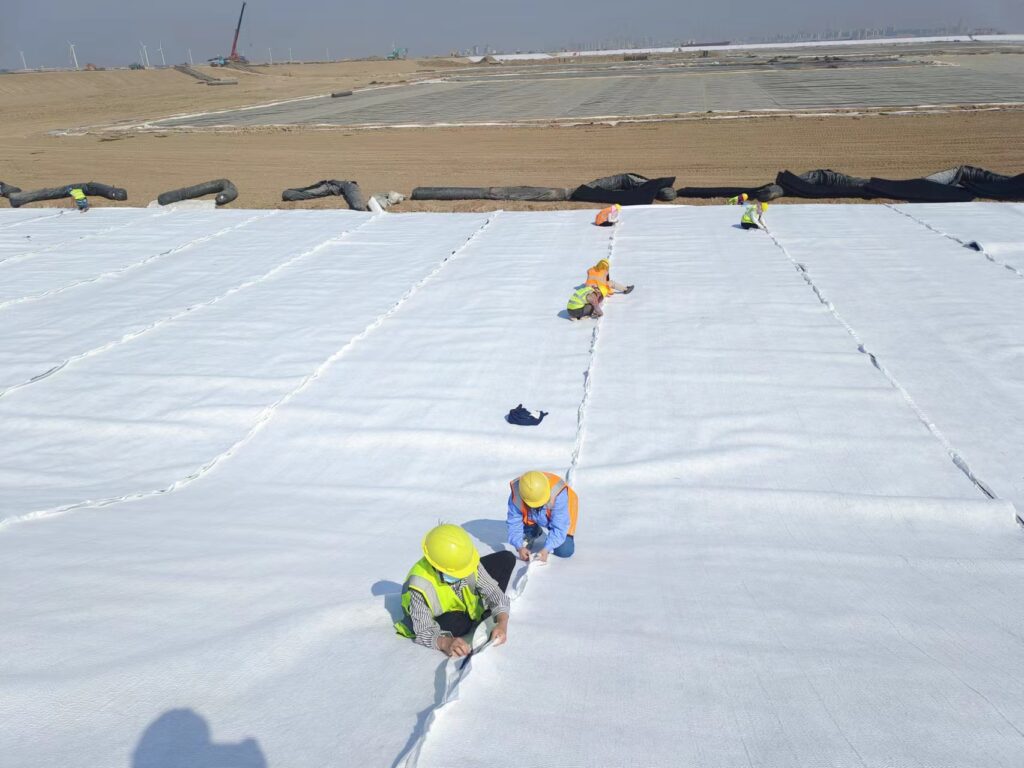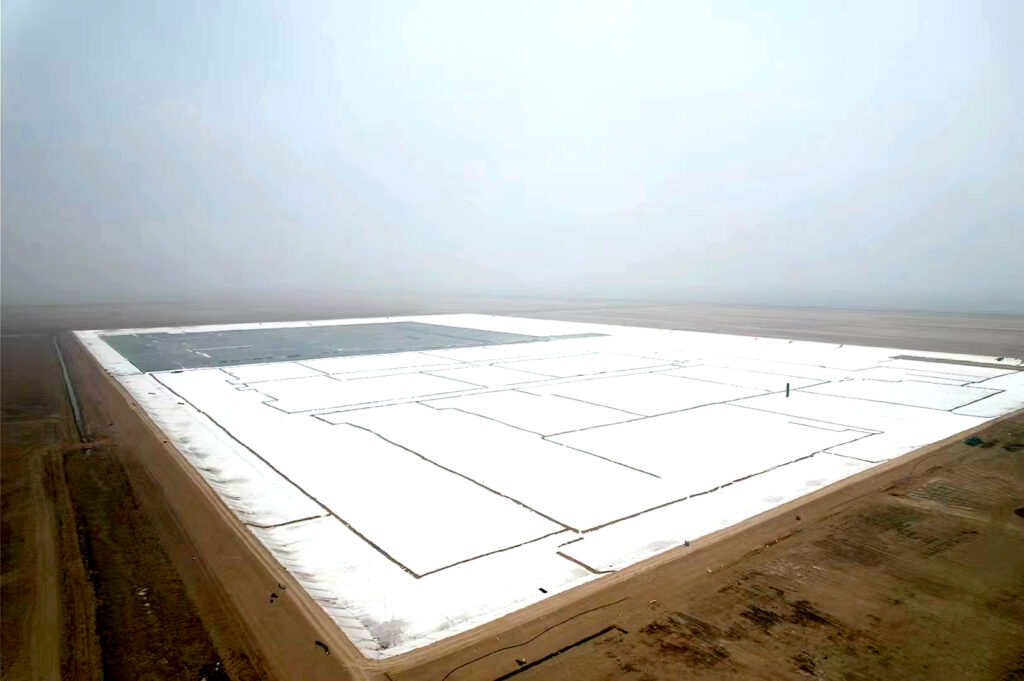What is the anti-seepage function of geotextile?
The anti-seepage effect of geotextiles mainly refers to preventing the penetration of water or harmful liquids.
Geotextiles are mainly composed of non-woven fabrics and geomembranes. The large number of three-dimensional pore structures in needle-punched geotextiles improve the cloth’s ability to conduct fluid on a flat surface, which is also a unique function of needle-punched geotextiles.
What are the dimensions and specifications of geotextiles?
Geotextile specifications and models: 100g/㎡~800g/㎡;
Geotextile width: 1m~6m;
Geotextile length: 50-100m.
The commonly used specifications of geotextiles range from 100g to 800g, and the commonly used colors are white, green, black, and yellow. The width can be cut according to requirements.

How to lay a reservoir with geotextile?
Ground treatment: Level the ground before starting, remove large obstacles, and fully compact it. Basic reinforcement materials such as calcareous soil, sand, corn flour, etc. can be used to reinforce the cushion.
Laying the first layer of geotextile: Spread the first layer of geotextile on the surface, cut it according to the shape and size of the pond, and leave overlapping parts. The edges should also be placed and fixed.
Turn over the first layer of geotextile: Use an excavator or manually turn over the corners of the first layer of geotextile to the location of the pond wall.
Laying the anti-seepage membrane: Lay the pre-made anti-seepage membrane on the geotextile and arrange it evenly to avoid damage.
Lay the second layer of geotextile: After laying the anti-seepage membrane, cover the second layer of geotextile with an even surface and keep it close to the anti-seepage membrane, leaving appropriate overlap at the edges.
Connection processing: Hot plug or pin wave welding is used at the overlap of the first and second layers of geotextile to ensure a tight connection. The joints on the surface of the anti-seepage membrane should avoid overlapping as much as possible and use hot melt technology for bonding.
Edge sealing treatment: After laying, roll up the outer geotextile to the wall and seal it tightly with stones and other heavy objects to prevent leakage and strengthen its anti-floating property.

Can geotextiles be used to make water reservoirs?
Geotextiles can be used to make water reservoirs. In arid areas with little rain all year round, large reservoirs need to be built to ensure irrigation of farmland and orchards. After the reservoir is excavated and formed, a layer of anti-seepage material needs to be laid. Anti-seepage geotextile can be selected for waterproofing.
Under normal circumstances, the anti-seepage geotextile of the appropriate thickness and specifications should be selected according to the size of the reservoir construction and the depth of the water storage.

